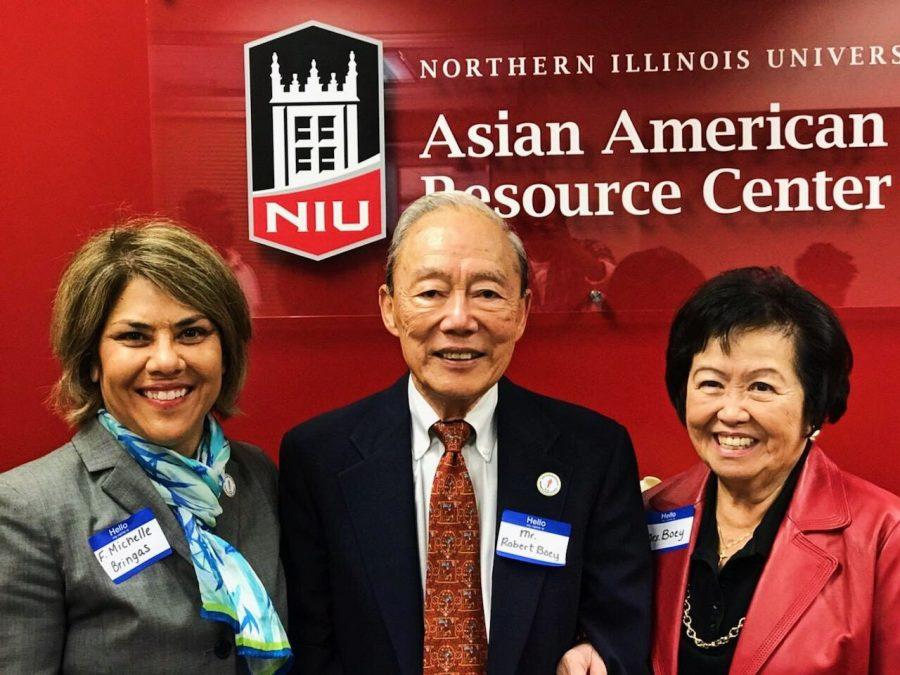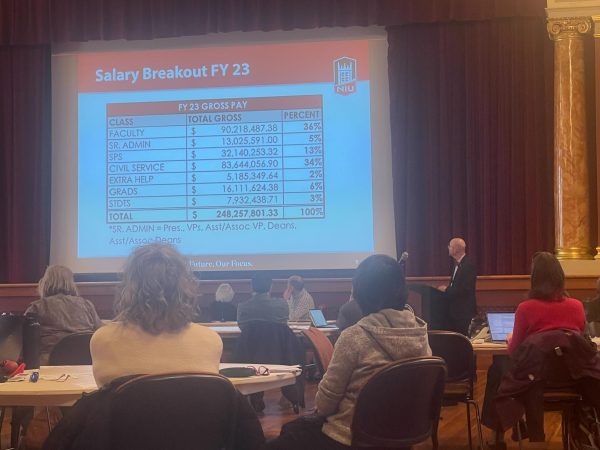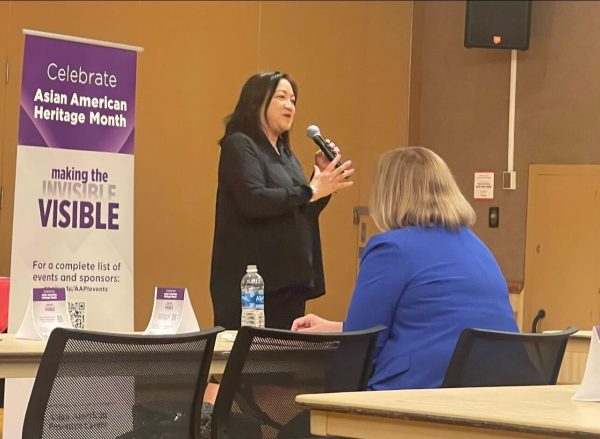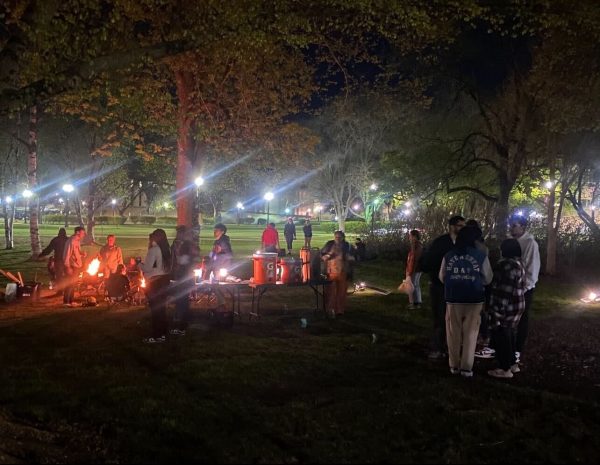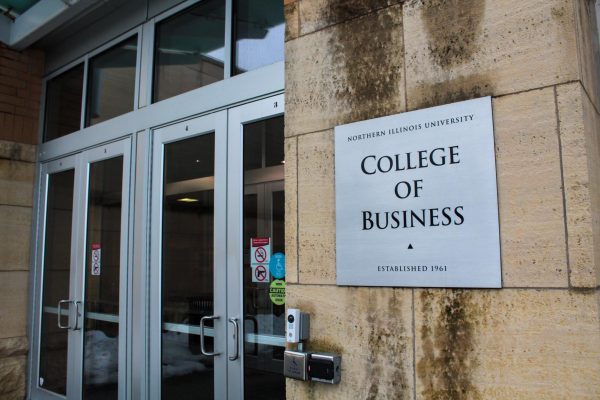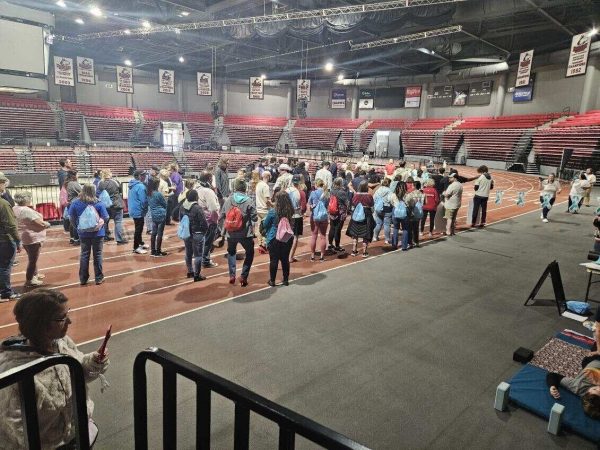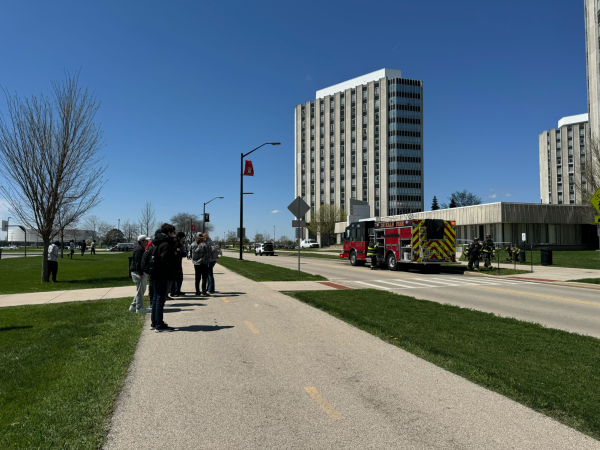AARC gains updated facility in new Wirtz Drive location
AARC Director Michelle Brings (left) poses with former Board of Trustees Trustee Robert Boey at the AARC Building opening.
October 18, 2018
DeKALB — The Asian American Resource Center [AARC] set up shop in a new location at 375 Wirtz Drive in a complex shared with NIU Health Services and the Department of Police and Public Safety.
AARC, formerly located at the Jacobs House, 429 Garden Road, officially moved operations to the new location as of Wednesday.
AARC Director Michelle Bringas said the new location has much to offer to students, through its central location, updated utilities and open space for events and study sessions.
“It’s student-focused, friendly and we have a lot of administrators, faculty and staff to thank for that,” Bringas said. “It gives us visibility, a sense of centrality; Holmes Student Center is right here and [the admissions office] is right here, which gives us the opportunity to have a much deeper collaboration as a place and space that can hold visiting groups.”
Belinda Roller, assistant director of Architectural and Engineering Services, said AARC’s updated headquarters were given all new flooring, paint, cabinets, furniture and technological equipment. She also said the most tangible improvement is a space upgrade from 2,200 square feet to 2,900 square feet..
Bringas said the transition has been a long time coming and emphasized the role NIU leadership, particularly President Lisa Freeman, had to play in the process.
“Last year during [Freeman’s] State of the University address, she mentioned she wanted to make the renovation and space of the Asian American Resource Center a priority,” Bringas said. “Out of the process, Freeman announced her goal was to see the renovation done within the next academic year.”
Regarding the former location, Bringas said much of the staff had fond memories of the building, though they collectively came to realize AARC had outgrown its capacity. She also said the building was initially allocated to the program in 2004 to serve the past needs of AARC, which were mostly administrative and operational.
Meryl Hansana, first year graduate student, adult higher education major and student mentor with AARC’s OHANA program, said she was extremely happy to see the transition occur during her time at NIU.
“I definitely love the location; the campus and community will be able to use the center more often,” Hasana said. “The old AARC was out of the way and a hassle for a lot of people to set up and promote fundraisers and study tables.”
Hansana also said the location has the potential to increase visibility on campus for AARC’s associated organizations, mainly the Philippine Student Association, Asian American Association and Asian Greek life.
Bringas said the focus of AARC’s transition was to formulate an area capable of potential program functions. Once a space with the right layout and capacity was identified last spring, renovations were undertaken over the summer. Bringas also said project coordinators then determined appropriate amenities to maximize the facility’s potential.
The headquarters’ open space can immediately be noted; intended to serve as a multi-purpose gathering area, Bringas said the space is filled with easily convertible tables and chairs. She also said AARC hopes to host resource fairs, study sessions and socials with its crowd-friendly setup.
“This area is open for everything functional, portable and moveable,” Bringas said. “It’s open for all sorts of configurations.”
Off the main area is a conference room, administrative offices, bathrooms, a lounge and kitchenette, all to be utilized by AARC staff and students. Bringas said the previous location did not offer the same capacity beyond an office and storage space.
Bringas also said technological upgrades from the previous location have been implemented. New features include Digital Monitor, televisions connected through Airplay and numerous charging ports. She said these utilities have been embraced particularly by students.
As the first director of AARC, Bringas has been present for the entirety of the program’s existence at NIU. She said AARC was first initiated in 2002, and was later given the Jacobs House for administrative and operational purposes in 2004. As the program grew with its student population, activities and outreach, Bringas said a reevaluation was undertaken to evaluate the expanding needs of AARC through NIU’s Program Prioritization process.
Within the larger scope of AARC’s transition, there are concrete goals program officials believe can be realized through the use of the Wirtz Drive space. Bringas said AARC’s fourfold operational values stand to be extended; advocacy, cultural education, student leadership development and community building.
“We think this is a terrific next step,” Bringas said. “We’re rethinking and revisioning the types of things we can do.”



